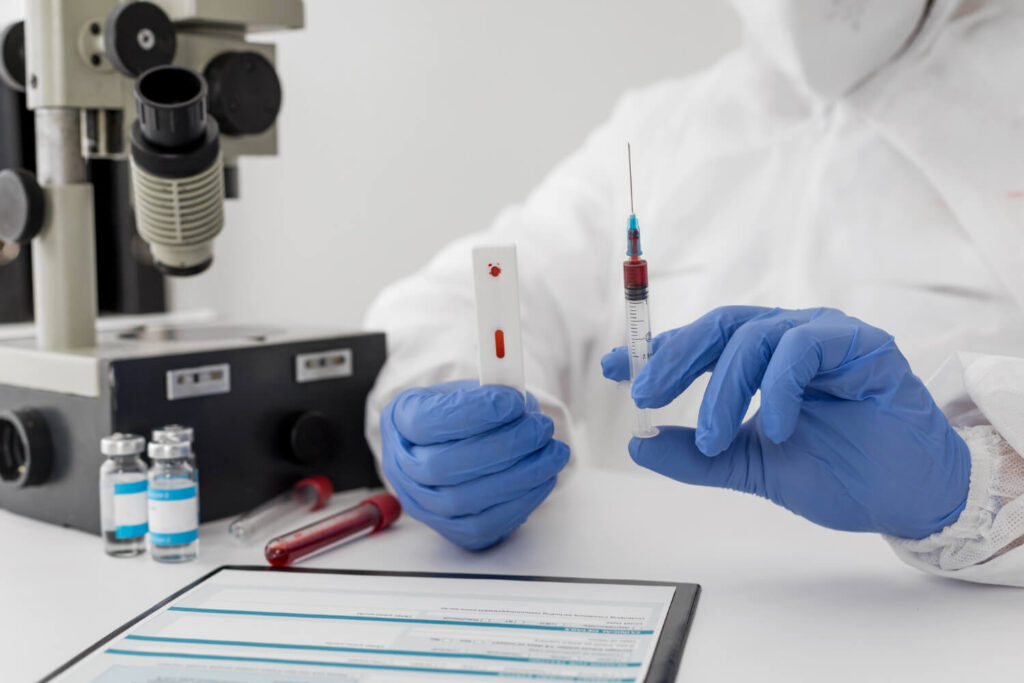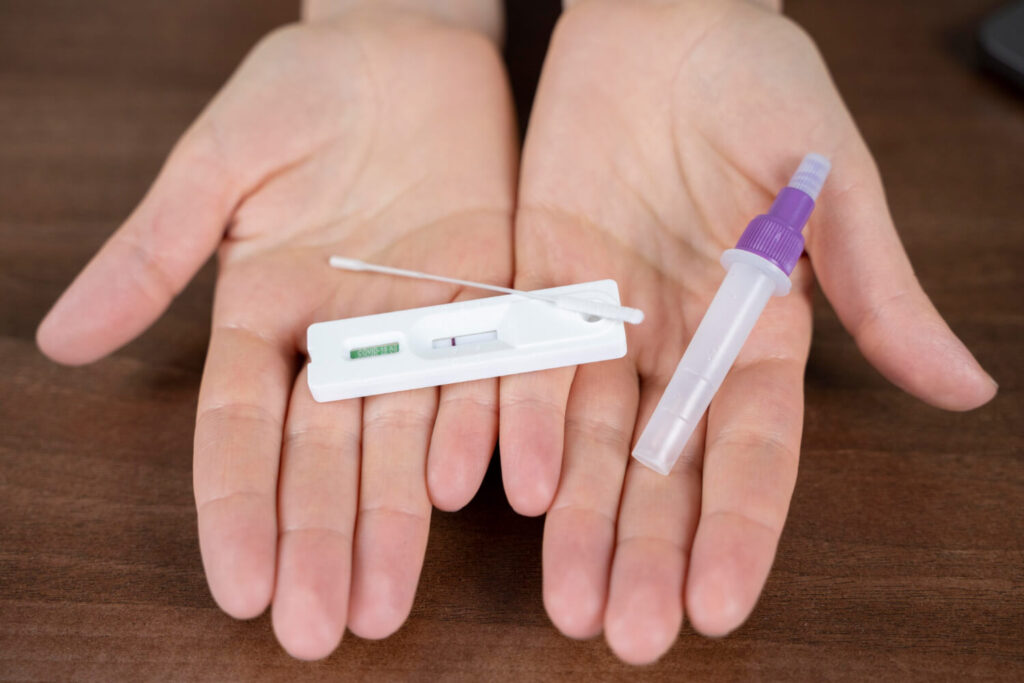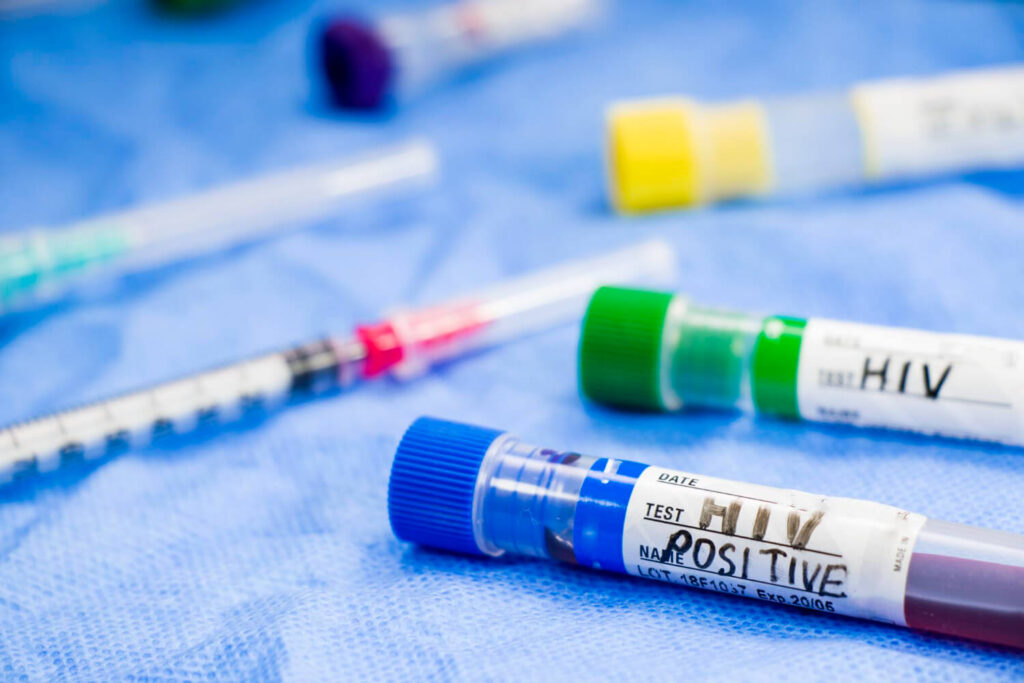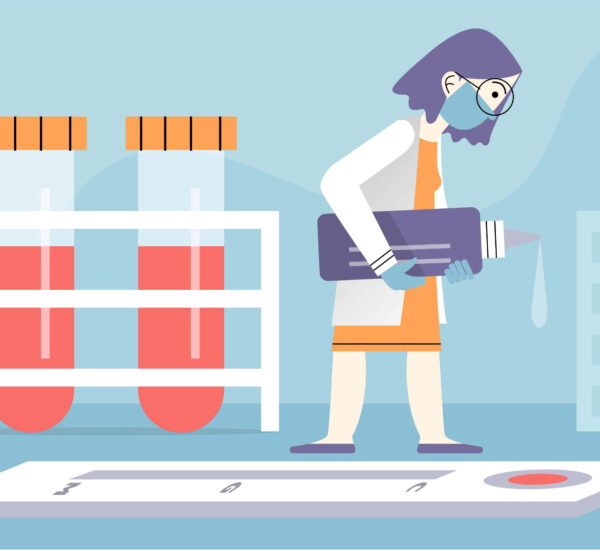HIV test accuracy is one of the crucial aspects that people must understand when using self-test kits for HIV screening. With an available test kit, they can identify their HIV status and begin HIV treatment immediately. In that case, focusing on HIV test errors can help to secure an accurate test kit. At the same time, knowing how to avoid these common pitfalls ensures your test is as accurate as possible.
Discover HIV antibodies and detect HIV infection without encountering false results. Let’s begin!
HIV Test Kits Available for Home Screening Test

When it comes to HIV testing at home, there are types of tests available that people can access. These tests are also FDA-approved and recommended by the World Health Organization. Access to these test kits can help achieve the global goal of at least 95% of individuals receiving their diagnosis of HIV by 2025.
Common HIV Screening Test Kit:
- Antibody test: It is a type of test that focuses on the detectable levels of antibodies, allowing to determine a faster HIV diagnosis
- Combination test (antibody and antigen test): This combination test is known for its accuracy in detecting HIV antibodies and antigens, providing a more comprehensive view of the infection status.
Despite their difference in scope, these 2 kinds of self-test kits are essential in the fight against the spread of HIV globally. So, it’s best to use them correctly and avoid HIV test errors for an accurate HIV diagnosis.
User Errors That Cause HIV Test Problems

User-related mistakes are among the leading causes of HIV test errors, especially with at-home test kits. The following are some of the most common user errors and their effects on test outcomes.
Ignoring the Instructions
Many people commonly assume that they know how to use an HIV test without carefully reading the instructions. However, each test kit is different, and failure to follow the specific directions for sample collection, testing time, and result interpretation can significantly affect accuracy. For example, using too much or too little of a sample, or misinterpreting the timing window for reading results, could lead to incorrect outcomes.
To avoid this issue: Take a few minutes to read the instructions carefully before starting the test. Ensure you understand every step, and follow the guide exactly as outlined. If something is unclear, try reaching out to a healthcare provider or the test kit manufacturer for clarification.
Testing During the Window Period
The window period is the time between potential exposure to HIV and when the virus becomes detectable by a test. During this period, the virus may not be detected, leading to a false negative result. For most HIV tests, the window period can range from two weeks to three months, depending on the type of test used (antibody, antigen/antibody combination, or nucleic acid).
To avoid this issue: Try to be aware of the recommended time frames for different test types to avoid testing early. If you suspect recent exposure, it may be best to wait a few weeks or consult a healthcare professional for advice on when to take the test. Follow-up testing is often recommended to confirm results.
Improper Sample Handling
Improperly collecting or storing samples is another common cause of HIV test errors. Whether using a blood sample or an oral swab, certain precautions must be taken to ensure accuracy. For instance, with blood tests, an insufficient sample may yield inconclusive results, while with oral swabs, eating, drinking, or smoking shortly before the test can affect the outcome.
To avoid this issue: Always collect samples exactly as instructed and avoid consuming food, beverages, or tobacco before the test. If using a blood sample, ensure that you collect the required amount. Proper handling reduces the chances of inaccurate results and ensures the reliability of the test.
The Impact of HIV Test Errors on Results
As mentioned, it is crucial to avoid HIV test errors at all times when testing HIV tests on your own. Doing so allows us to avoid possible complications like further spreading HIV due to no awareness of the correct HIV status. That’s because when there’s a user error, it can lead to false positives or false negatives. Thus, receiving an inaccurate health status.
Let’s discuss the meaning of these results below!
- False Positives: It occurs when the test indicates that HIV is present when it is not. Although rare, false positive HIV test can happen due to factors such as cross-reactivity with other infections or testing too soon after vaccinations. The emotional stress associated with a false positive can be significant, underscoring the importance of confirmatory testing.
- False Negatives: It implies that HIV is not detected in the test when it is present. This usually occurs if the test is performed during the window period or if there are errors in sample collection. False negatives can give a misleading sense of security and delay critical medical interventions.
- Inconclusive or Invalid Results: This means that the test may not provide a clear positive or negative result. This can happen if the test kit is damaged, expired, or improperly stored, or if the sample is inadequate. Inconclusive results require a repeat test to ensure accuracy.
What to Do If You Suspect an HIV Test Error

If you think an error might have affected your HIV test, it is essential to take steps to clarify your status and get a reliable result.
Retake the Test
When in doubt, retaking the test can help confirm your HIV status. If you suspect an error during the first attempt—such as using an expired test kit, collecting an insufficient sample, or performing the test during the window period—conduct another test. Opting for a laboratory-based test can further improve accuracy.
Consult a Healthcare Provider
If you receive a positive result or are uncertain about your results, speak with a healthcare provider. They can recommend additional tests, such as confirmatory laboratory tests, to ensure accuracy. Professional advice is also important if you have symptoms or recent exposure, as a negative result may need further verification.
Use a Reputable Test Kit
Ensure that the HIV test kit you are using is from a trusted source. Counterfeit or substandard kits can produce unreliable results. Purchase test kits from accredited pharmacies, healthcare facilities, or reputable online vendors to avoid the risks associated with fake products.
Frequently Asked Questions
What should I do if I get a positive HIV test result at home?
If you receive a positive result from a home test or initial screening, it is important to seek a confirmatory test from a healthcare provider. This additional test will help to verify the accuracy of the initial result and provide you with a more comprehensive understanding of your health status.
It is crucial to follow up with a healthcare professional to ensure that you receive the appropriate care and guidance based on accurate and reliable testing.
Can certain conditions cause false positives in HIV tests?
Yes, some conditions such as recent vaccinations or autoimmune disorders can lead to false positive results on certain medical tests. If you receive a positive result, it is important to confirm it with follow-up tests to ensure the accuracy of the diagnosis. This will help to rule out any potential underlying health issues and provide a clear understanding of your current health status.
How can I avoid errors during HIV testing?
Avoiding HIV Testing mistakes is possible by following the test instructions carefully. It can help avoid errors and ensure accurate results. Make sure that the sample collection is done properly and take the test at the appropriate time after potential exposure. By doing so, the risk of false negatives or false positives can be minimized, ultimately leading to a more reliable outcome.
Is retesting necessary after a negative HIV result?
Retesting for HIV may be recommended if the initial test was taken during the window period, which is the time between when a person is infected with HIV and when the test can accurately detect the virus, or if you are experiencing symptoms of HIV. It is important to consult with a healthcare provider who can advise on the best course of action and provide guidance on when and how to retest for HIV.
Conclusion
Understanding how common testing mistakes occur and how to prevent them can significantly reduce the risk of false positives, false negatives, or inconclusive results. In that case, avoiding HIV test errors is essential to accomplish that goal.
If you need more guidance on the proper usage of test kits, try booking an online consultation with a healthcare professional like an infectious disease doctor!



